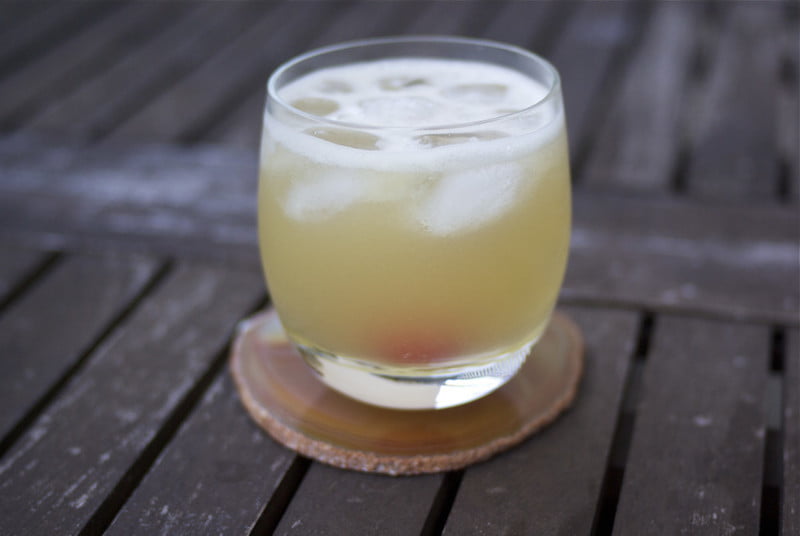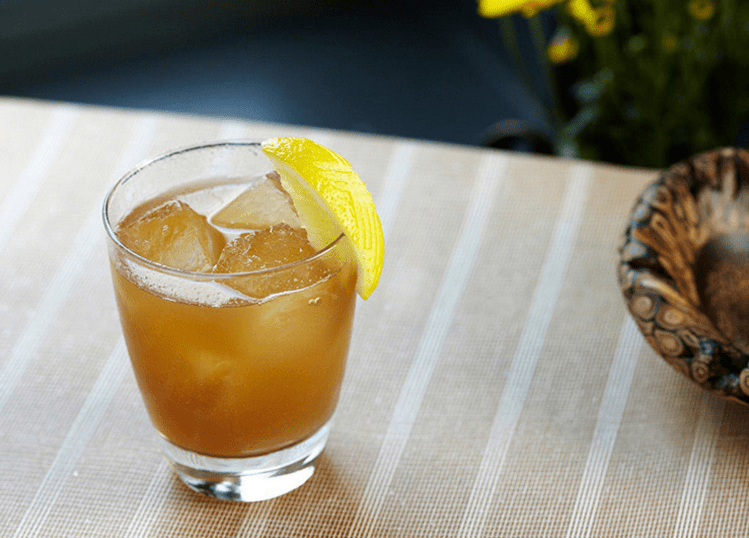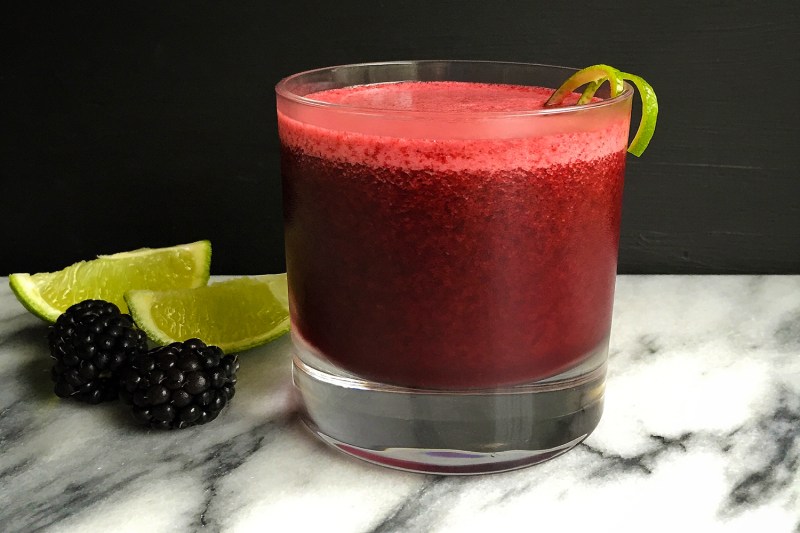Even if you’re a keen whiskey sour drinker, you might not know about the long history of the whiskey sour cocktail and how it came to be such an iconic part of the cocktail canon. But what is a whiskey sour? For over 150 years people have been enjoying this cocktail, which dates back to the 1860s, and it follows in the footsteps of the spirit and citrus combination that was commonly drunk in the British Navy by sailors looking to avoid scurvy by imbibing lemons and limes — which is where Brits get the nickname Limeys from.
Finally, sugar and water were added for taste. At this point, the drink is probably starting to sound familiar. (Grog, the rum-based favorite of pirates across the seven seas, is made from the same components, substituting whiskey for the sugarcane-based spirit.) When it comes to the official record, there are three main points of reference for the whiskey sour. The first written record comes in the seminal 1862 book The Bartender’s Guide: How To Mix Drinks, by Jerry Thomas. The original recipe is below.
Original whiskey sour recipe

Ingredients:
- 1 teaspoon powdered white sugar (dissolved in a little seltzer or Apollinaris water)
- The juice of half a small lemon
- 1 wine glass of bourbon or rye whiskey
- Berries (for garnish)
Method:
- Fill a small bar glass full of shaved ice.
- Shake up the powered white sugar, lemon juice, and bourbon or rye whiskey and strain it into a claret glass.
- Add berries for garnish
(This recipe differs from the modern-day version in the style of glass and the type of ice used, but the prototype was there.)
The next reference comes from, of all places, an 1870 edition of the Waukesha Plainsdealer, a Wisconsin newspaper. And the final reference to the drink comes two years later, in 1872. A former ship steward, Elliot Staub, “invented” a drink — the whiskey sour — in a bar in Iquique (then part of Peru). Through these three origins, we come to, more or less, what we have today — a cocktail that mixes a spirit, a sour, and a sweet.
Now that you’re read up and prepared for the day, it’s time to dive in. Check out George Dickel’s version of the original and then a few other takes on this iconic drink.
Whiskey sour recipe variants

George Dickel Whisky Sour
(Pictured above)
Ingredients:
- 3 ounces George Dickel No.12 Whisky
- 5 ounces lemon juice
- 3/4 ounce simple syrup
Method:
- Shake and strain the ingredients into an ice-filled rocks glass.
- Garnish with a lemon wedge or cherry.
Dewar’s Sour Rouge
(Created by Cyllan Hicks, New York City)\
Ingredients:
- 2 ounces Dewar’s 12 Blended Scotch Whisky
- 1 ounce lemon juice
- 1 ounce rosemary honey syrup (1:1 honey and water with rosemary)
- 1/2 ounce Lillet Rouge
Method:
- Shake all the ingredients and pour over rocks.
- Add Lillet Rouge as a floater.
- Garnish with lemon wheel and rosemary sprig.
Jeff’s Redneck Sour
Ingredients:
- 1 1/4 ounces Bulleit Rye
- 1 ounce fresh lemon sour
- 5 ounces fresh grapefruit juice
- 2 dashes grapefruit bitters
Method:
- Shake and strain ingredients into an ice-filled rocks glass.
- Garnish with a half wheel of grapefruit.
Basil Hayden’s Summer Sour
(By San Francisco Mixologist Matt Grippo)
Ingredients:
- 1 1/2 parts Basil Hayden’s Bourbon
- 1/2 part fresh lemon juice
- 3/4 part sweet vermouth
- 1/4 part Tonic Syrup
- 2 dashes of Angostura Bitters
- Orange twist (for garnish)
Method:
- Add all ingredients to a cocktail shaker with ice and shake vigorously for 10 seconds.
- Strain into an iced-filled rocks glass.
- Garnish with an orange twist.
Knob Creek Citrus Sour
(By Celebrity Chef Michael Symon)
Ingredients:
- 1 1/2 parts Knob Creek Bourbon
- 1/2 part lemon juice
- 1/2 part simple syrup
- 2 parts Orangina Soda
- 5 sprigs thyme
- 1 egg white
- Muddle thyme and simple syrup thoroughly in the bottom of the shaker.
- Combine with lemon juice, bourbon, and egg white.
- Add ice and shake vigorously for 1 minute. Strain over ice and float with Orangina soda.
- Garnish with a few sprigs of thyme.
Whiskey sour variation tips

The beauty of the whiskey sour is its simplicity, which also makes it endlessly customizable. Here are some exciting variations to explore in your home bar.
Fruity
- Berry blast: Muddle fresh berries like raspberries, blackberries, or blueberries for a burst of fruity sweetness.
- Tropical twist: Add a splash of pineapple juice, mango puree, or passion fruit liqueur for a tropical vibe.
Smoky and spicy
- Smoky sour: Use peated scotch for a smoky flavor, pair it well with cherry or maple syrup.
- Spicy sour: Add a few dashes of habanero or jalapeno bitters for a fiery kick.
Sweet and savory
- Maple magic: Substitute maple syrup for simple syrup for a touch of autumnal sweetness.
- Coffee kick: Add a shot of espresso for a boozy coffee cocktail.
What is the history of the New York Sour?

One of the most famous and unusual versions of the whiskey sour is a seemingly improbable variation that makes use of red wine. The New York Sour adds a float of red wine to the drink, which gives it a rich tannin flavor and a striking look. This variation was created in the 1880s and was originally known as a Continental Sour. And despite its name, according to the website Spirits Beacon it is thought to have been made first by a bartender in Chicago, not New York.
The drink quickly made its way to New York, though, where it caught on and became popular enough to be named after the city. It had many other names at the time, though, including the Southern Whiskey Sour and the Claret Snap.
A New York Sour is typically made with bourbon, as opposed to the whiskey sour ,which can be made with any type of whiskey, though there’s no reason you can’t add a red wine float to whatever version of the whiskey sour you happen to be enjoying. Strange as it may sound, the red whine adds a good deal of interest to the cocktail, so it’s worth trying out at home if you haven’t had it before.




